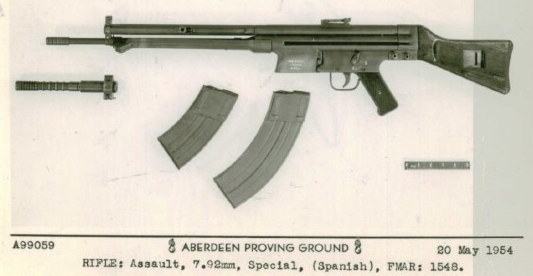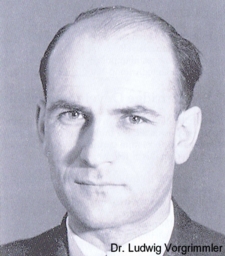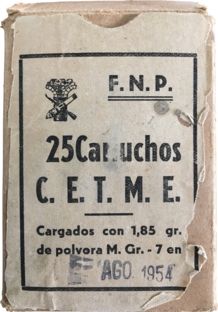

With the capitulation of Germany at the end of WW2, the Mauser factory fell in the French area of occupation. Most of the Mauser engineers were transferred to France, together with the machinery from these factories. The equipment and personnel fell under the direction of DEFA (Direction des Etudes et Fabrications d’Armement). Some of the equipment was transferred to Mulhouse in Alsace and among the technicians was Ludwig Vorgrimmler. He assisted with research and development of assaulr rifle cartridges and developed the Vorgrimmler Mod.1 carbine which was virtually identical to the StG45 that Mauser was working on just before the end of the war. His rifle was called the CEAM Model I/1 (Centre d’Etudes et d’Armement de Mulhouse), a research division of the French Châtellerault arsenal, the first prototype was test fired in July 1948. A second design from another former Mauser engineer, Theodor Löffler was ready in September 1948, and was also effectively a copy of the StG-45(M). Löffler’s design was chosen above the one by Vorgrimmler. Initial tests were done on the 7.65×35 Mle.48, but the French had intentions of adopting the .30 M1 Carbine and subsequent carbines were manufactured in this caliber. France joined NATO in 1949 and as such switched their attention to the US .30 T65 Light Rifle case, which was later modified to the FAT1 E3 case, which was adopted by NATO and that we know today as the 7.62×51 NATO, or .308 Winchester.
As a result of Theodor Löffler’s design being accepted, Dr. Vorgrimmler eventually left CEAM and relocated to Spain to join CETME (Centro de Estudios Técnicos de Materiales Especiales). Spain at that stage was not a NATO member yet and continued their own studies into intermediate cartridges based on the 7.92×33 Kurz. The Spanish specifications required a carbine that did not weigh more than the StG-44, with similar recoil in order to facilitate full-auto fire and had a range of 800 – 1000m, almost double that of the 7.92 Kurz. The problem was solved by Dr. Gunther Voss, an ex-German Luftwaffe ballistic expert, with a 105gr. bullet with a GM jacket and aluminium core. Spain also bacame a NATO member an as such, moved over to the 7,62×51. More info HERE














